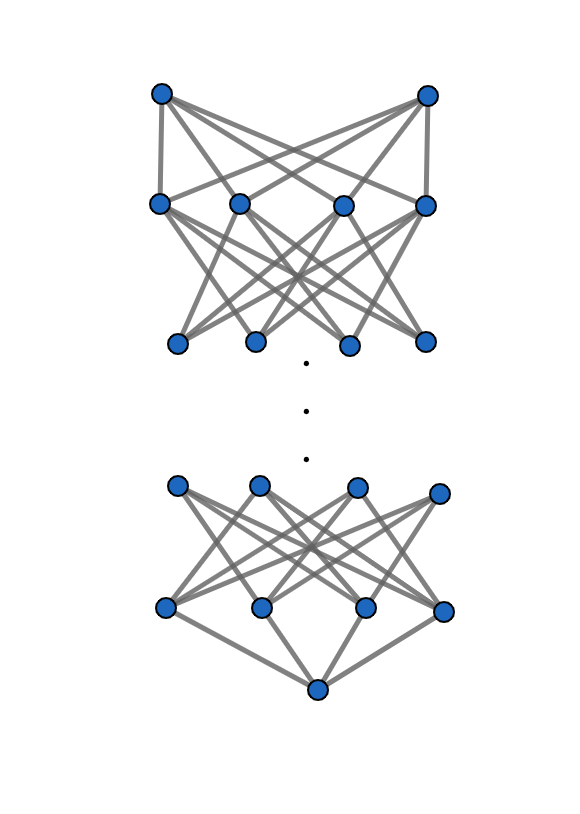The background of our discussion is intuitionistic logic, i.e. the following definitions are intuitionistic Kripke frame.
For $n \geq 1$, let $\mathcal{C}_n$ denote the frame which is shown in Fig.1. It is formed by the set: $$ \left\{(i, j)\in \omega \times \omega \mid (i=0, 0 \leq j \leq 1) \vee (1 \leq i \leq n-2, 0 \leq j \leq 3) \vee (i=n-1, j=0)\right\}, $$ with the accessibility relation described in
 .
.
For $1\leq s\leq n-2$, the frame $\mathcal{C}_n(s)$ denote the frame which is shown in Fig.2. It is formed by the set: $$ \left\{(i, j)\in \omega \times \omega \mid (i=0, 0 \leq j \leq 1) \vee (1 \leq i \leq n-2, i \neq s, 0 \leq j \leq 3)\vee (i=s, j=0) \vee (i=n-1, j=0)\right\}, $$ with the accessibility relation described in

Thus the frame $\mathcal{C}_n(s)$ is obtained by gluing $(s,0)$, $(s,1)$, $(s,2)$, $(s,3)$ together of the frame $\mathcal{C}_n$.
I want to prove the following result:
Assuming $\psi$ is a formula with $m$ variables, $n$ is a sufficiently large number. Then there exists $s \leq n$ such that, if $\mathcal{C}_n \nvDash \psi$ then $\mathcal{C}_n(s)\nvDash \psi$.
My attempt at analysis is: let $\psi(p_1, ... ,p_m)$ be a formula with $m$ varibles. Because $V(p_j)$, the valuation on $\mathcal{C}_n$ of a given variable $p_t$, is an upset, there will be $(i,0)$, $(i,1)$, $(i,2)$, $(i,3)$, $(i-1,0)$, $(i-1,1)$, $(i-1,2)$, $(i-1,3)$ (or similar result for more points) agree on any variable when the height $n$ of $\mathcal{C}_n$ is sufficiently large. Then we have a valuation $V'(p_j):=V(p_j)\setminus \{(i,1), (i,2), (i,3)\}$ on $\mathcal{C}_n(i)$. $f$ is a map from $\langle\mathcal{C}_n, V\rangle$ onto $\langle\mathcal{C}_n(i), V'\rangle$: $f(x)=(i,0)$ if $x \in \{(i,0),(i,1), (i,2), (i,3)\}$ and $f(x)=x$ otherwise. I am in trouble since $f$ is not a $p$-morphism.
